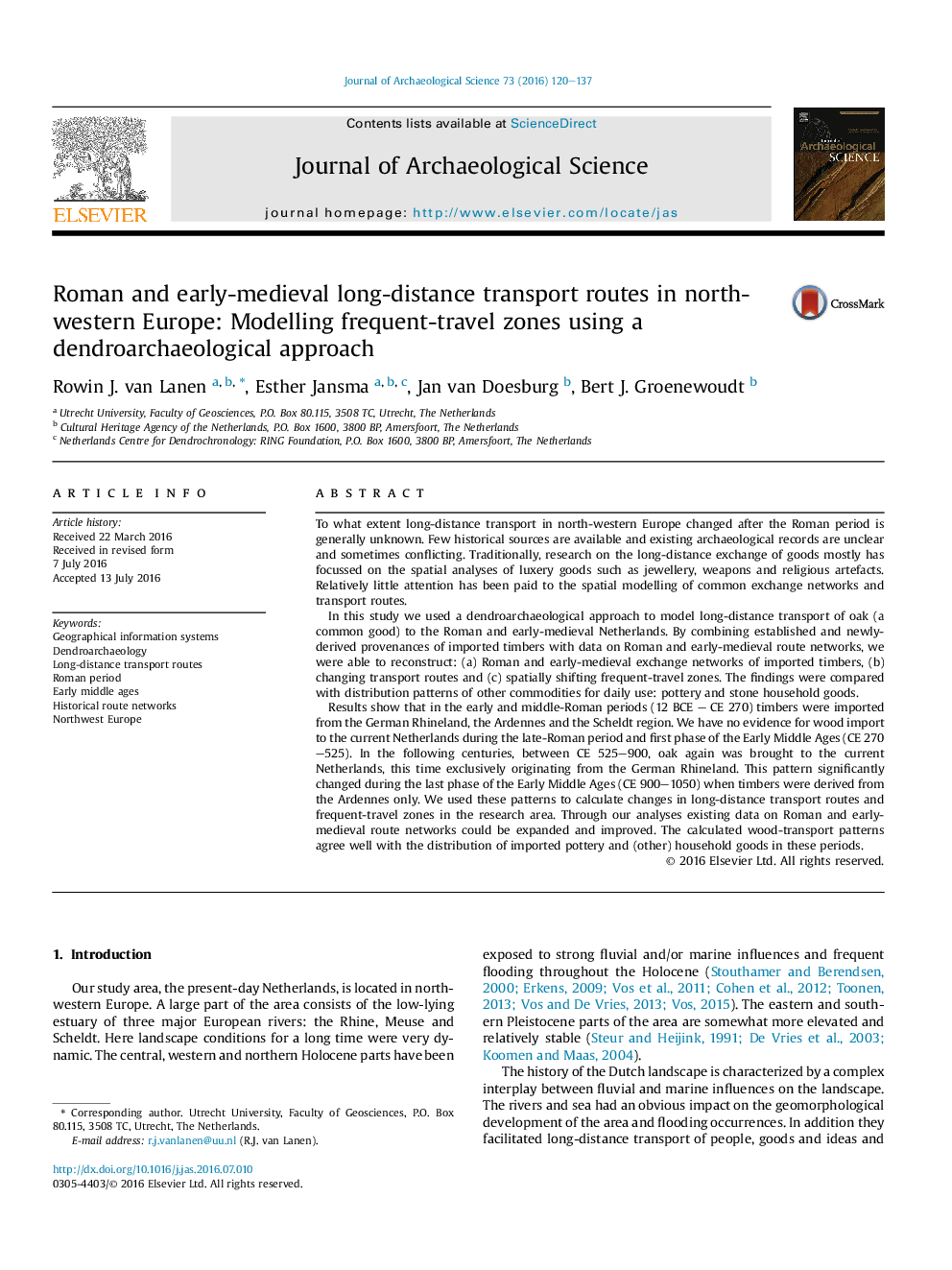| Article ID | Journal | Published Year | Pages | File Type |
|---|---|---|---|---|
| 7441240 | Journal of Archaeological Science | 2016 | 18 Pages |
Abstract
Results show that in the early and middle-Roman periods (12 BCE - CE 270) timbers were imported from the German Rhineland, the Ardennes and the Scheldt region. We have no evidence for wood import to the current Netherlands during the late-Roman period and first phase of the Early Middle Ages (CE 270-525). In the following centuries, between CE 525-900, oak again was brought to the current Netherlands, this time exclusively originating from the German Rhineland. This pattern significantly changed during the last phase of the Early Middle Ages (CE 900-1050) when timbers were derived from the Ardennes only. We used these patterns to calculate changes in long-distance transport routes and frequent-travel zones in the research area. Through our analyses existing data on Roman and early-medieval route networks could be expanded and improved. The calculated wood-transport patterns agree well with the distribution of imported pottery and (other) household goods in these periods.
Keywords
Related Topics
Physical Sciences and Engineering
Materials Science
Materials Science (General)
Authors
Rowin J. van Lanen, Esther Jansma, Jan van Doesburg, Bert J. Groenewoudt,
